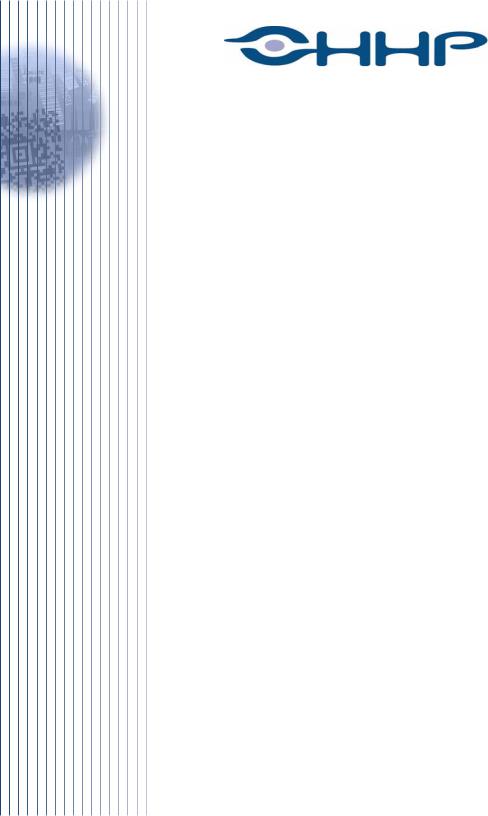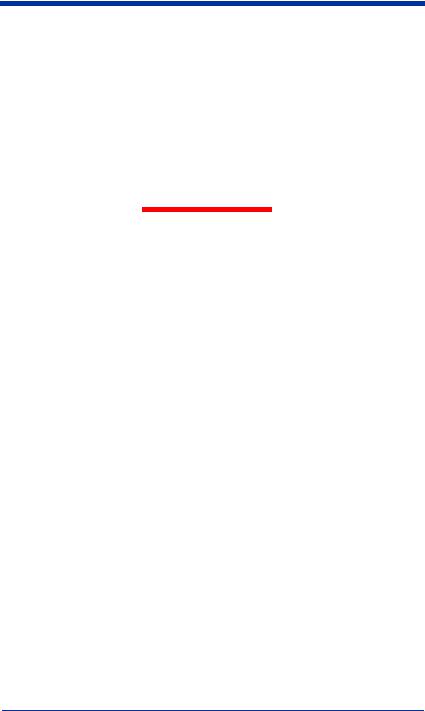HandHeld IT4600, IT4410, IT4800, IT4710, IT4X80 User Manual

Quick Check 2D Print
Quality Assessment
Applies to the following products:
IT4410, IT4710, IT4600, IT4800, IT4X80
User’s Guide

Disclaimer
Hand Held Products, Inc. d/b/a HHP (“HHP”) reserves the right to make changes in specifications and other information contained in this document without prior notice, and the reader should in all cases consult HHP to determine whether any such changes have been made. The information in this publication does not represent a commitment on the part of HHP.
HHP shall not be liable for technical or editorial errors or omissions contained herein; nor for incidental or consequential damages resulting from the furnishing, performance, or use of this material.
This document contains proprietary information which is protected by copyright. All rights are reserved. No part of this document may be photocopied, reproduced, or translated into another language without the prior written consent of HHP.
© 2002-2004 Hand Held Products, Inc. All rights reserved.
Web Address: www.HHP.com

Table of Contents
Chapter 1 - Introduction
User Operation...................................................................... |
1-1 |
Reading Techniques.............................................................. |
1-1 |
Symbology/Parameter Specifics........................................... |
1-2 |
2D PQA Reporting ............................................................... |
1-3 |
Full Report ..................................................................... |
1-3 |
Screening Report............................................................ |
1-3 |
Identifying Symbol Content........................................... |
1-4 |
2D Stacked / Multi-row ........................................................ |
1-5 |
PDF417 .......................................................................... |
1-5 |
MicroPDF417................................................................. |
1-8 |
2D Matrix.............................................................................. |
1-9 |
Aztec Code..................................................................... |
1-9 |
Data Matrix .................................................................. |
1-10 |
QR Code....................................................................... |
1-11 |
MaxiCode..................................................................... |
1-12 |
Postal (Height-Modulated) Bar Code Symbologies ........... |
1-13 |
Postnet and Planet Code............................................... |
1-13 |
4-State Codes...................................................................... |
1-15 |
Parameter Interpretation ..................................................... |
1-16 |
Average Bar/Gap Width............................................... |
1-16 |
Average (Bar) Height/Extension Height...................... |
1-16 |
Bar Sequence................................................................ |
1-17 |
Codeword (Data and Check)........................................ |
1-17 |
Codeword Yield ........................................................... |
1-17 |
Data Safety Margin ...................................................... |
1-17 |
Edge Accuracy ............................................................. |
1-17 |
Encoded Message......................................................... |
1-18 |
Error Correction/Error Correction Characters ............. |
1-18 |
Error Correction Level (ECL)...................................... |
1-18 |
Error Detection/Error Detection Characters................. |
1-18 |
Mask Pattern/Masking ................................................. |
1-18 |
Module Errors .............................................................. |
1-19 |
Print Growth (Horizontal and Vertical) ....................... |
1-19 |
Row Height .................................................................. |
1-19 |
i

Symbology.................................................................... |
1-19 |
Useful Row Height ....................................................... |
1-19 |
X-dimension ................................................................. |
1-20 |
Chapter 2 - Quick*View |
|
Quick*View Demonstration Software Instructions .............. |
2-1 |
Setting Up the Imager and the Quick*View Software ... |
2-1 |
Installing Quick*View from the Web................................... |
2-1 |
Temporary Quick*View Configuration ................................ |
2-2 |
Using the Quick*View Software .......................................... |
2-3 |
Chapter 3 - Customer Support |
|
Obtaining Factory Service..................................................... |
3-1 |
Technical Assistance............................................................. |
3-2 |
ii

1
Introduction
Two-dimensional Print Quality Assessment (2D PQA), a feature of HHP's image readers, identifies a successfully read symbol and also reports graded measurement parameters obtained from the symbol.
2D PQA is not "true" verification in the traditional sense of the word; however it can easily and inexpensively provide test results that you may find useful for 2D bar code symbol print quality process control. This User's Guide explains how to activate HHP's 2D PQA analysis function, what is reported, how the data is measured, what the readings mean, and what you might do to improve your process.
User Operation
To utilize 2D PQA you need to have an IMAGETEAM™ 4600/4800/4X80 with firmware revision 1.135.1.1 or higher or an IMAGETEAM 4410/4710 with firmware revision 1.91.2.18 or higher..
Show Firmware
To see displayed results using the 2D PQA feature, Microsoft® Notepad, a word processor/editing program, or Quick*View is recommended. Refer to Chapter 2 for information regarding Quick*View.
Reading Techniques
Hand held movement, rotation, and location will affect the measured results. To obtain proper repeatable reads that yield useful print quality information, you should follow the techniques listed below.
•Lay the bar code symbol to be tested on a flat surface
•IT4600/4800/4X80: Hold the imager 7.0 in (17.8 cm) for SR models, 3.5 in (8.9 cm) for the HD, and 4.5 in (11.4 cm) for the SF from the bar code symbol. This distance is measured from the imager's front window to the reading surface.
•IT4410/4710: Hold the imager 5.0 in (12.7 cm) for LR models, 2.0 in (5.1 cm) for the HD, and 7.0 in (17.8 cm) for the LX from the bar code symbol. This distance is measured from the imager's front window to the reading surface.
1 - 1

•The hand-held imager has a view finder that projects a bright aiming beam that corresponds to the imager’s horizontal field of view. The aiming beam should be centered over the bar code and positioned horizontally over the code (no tilt, skew, or rotation). If the symbol surface is shiny, the reader may have to be held several degrees below the normal position to avoid specular reflections.
2D Matrix symbol
•When testing, attempt to minimize as much movement of the imager as possible. Excessive movement can cause variability in PQA results.
•It is best to take multiple reads of the symbol, comparing the PQA results to form a better indication of the overall symbol quality.
When you use 2D PQA under the above conditions, you can expect meaningful and repeatable results that can be used to make correction adjustments in your symbol generation process.
Symbology/Parameter Specifics
Two-dimensional bar code symbologies come in three distinct varieties or basic structures:
1.Stacked or Multi-Row symbologies (e.g., PDF417 and MicroPDF47),
2.2D Matrix symbologies (e.g., Data Matrix, Aztec Code, QR Code, and Maxicode), and
3.Postal (Height-Modulated) symbologies (e.g., Postnet and Planet Code in the U.S. and the 4-State codes used in England, the Netherlands (KIX), Canada, Japan, and Australia).
Since each of these basic types or structures differ, the 2D PQA outputs are quite different to accommodate the quality parameters for each of the classes of 2D symbols.
1 - 2

2D PQA Reporting
Full Report
HHP's 2D PQA reporting can be enabled in two different modes: Full Report or Screening.
If you are using Quick*View, you can enable Full Report, a listing of all of a symbol's identifying information, measurements, and corresponding grades, by typing the following menu command:
2D_PQA1
or by scanning the following bar code:
Full Report
Note: With the IT4600/4800/4X80, the PQA report is sent out as a second data/ beep sequence after the bar code data. The report has its own HHP code ID of >(0X3E) so it can be uniquely identified.
Screening Report
Screening is a grade-based mode that allows display of a limited list of identifying information, as well as only those measurements that are below Minimum Acceptable Grade (MAG) level. With the IT4600/4800/4X80, if all of the parameters are met in the screening mode, only the bar code data will be output with a beep. If one or more of the measured parameters fail to meet the MAG, the PQA message is also sent with a beep.
Note: With the IT4410/4710, screening mode outputs are also accompanied by a single beep if all parameters are okay or a triple beep if one or more of the measured parameters fail to meet the MAG.
If you are using Quick*View, you can enable Screening by typing the following menu commands:
2D_PQA2 |
when A is the Minimum Acceptable Grade |
2D_PQA3 |
when B is the Minimum Acceptable Grade |
2D_PQA4 |
when C is the Minimum Acceptable Grade |
2D_PQA5 |
when D is the Minimum Acceptable Grade |
1 - 3

If your imager is in keyboard wedge mode, enable Screening by scanning the following bar codes.
Minimum Acceptable |
Minimum Acceptable |
Grade = A |
Grade = B |
Minimum Acceptable |
Minimum Acceptable |
Grade = C |
Grade = D |
You can exit both Full Report and Screening modes by either typing the menu command, 2D_PQA0, if you are using Quick*View, or by scanning the following bar code:
Exit
Identifying Symbol Content
To identify content or "format" aspects of a symbol, 2D PQA modes report the less than obvious characteristics of a symbol. For quality determination, 2D PQA reports those parameters that both relate directly to the print or creation process, and that also remain relatively consistent over a range of hand held reading situations.
In the 2D PQA Full Report mode, successful scans of a 2D symbol output a message similar to the following (with slight variations based upon the symbology being tested):
This is a representative PDF417 symbol
>>> PQA from HHP <<<
PDF417: 11 rows x 3 cols, 25 data & 8 chks (ECL = 2) X roughly = 0.014"
[A] < Row Height = 3.1 X
[A] < Useful Row Height = 2.5 X (82% Row)
[A]< Data Safety Margin = 100% (0 Erasures & 0 Errors)
[B]< Edge Accuracy = 59%
[C]< Print Growth = -43% of X
1 - 4

While the details are explained below, this general format includes:
•the encoded data (the usual output message) in the first line.
•a banner " >>> PQA from HHP <<<" identifying the start of the 2D PQA report.
•the symbology, its features, and approximate size.
•graded print quality parameters in the following lines.
In the 2D PQA Screening mode with "A" as the Minimum Acceptable Grade, this same scan would be accompanied by a triple beep and the following output message:
This is a representative PDF417 symbol
>>> PQA from HHP <<<
Minimum Acceptable Grade = A PDF417: X roughly = 0.014" Poor Edge Accuracy (59%)
Excessive Print Shrinkage (-43% of X)
With "C" as the Minimum Acceptable Grade, this same scan would produce just a single beep and the following output message:
This is a representative PDF417 symbol
>>> PQA from HHP <<<
Minimum Acceptable Grade = C PDF417: X roughly = 0.014" All Measurements within range
The actual details of the symbol identifying and print quality parameters are explained in the following sections.
2D Stacked / Multi-row
This section describes 2D PQA outputs for PDF417 and MicroPDF417, as well as their derivative 2D arrays used in UCC/EAN Composite Components and T-Linked Code 39.
PDF417
The Full Report from a typical scan looks like the following (line numbers have been added in curly brackets):
{1} This is a representative PDF417 symbol {2} >>> PQA from HHP <<<
{3} PDF417: 11 rows x 3 cols, 25 data & 8 chks (ECL = 2) {4} X roughly = 0.014"
1 - 5

{5} [A] < Row Height = 3.1 X
{6} [A] < Useful Row Height = 2.5 X (82% Row)
{7} [A] < Data Safety Margin = 100% (0 Erasures & 0 Errors)
{8} [B] < Edge Accuracy = 59%
{9} [C] < Print Growth = -43% of X
where:
{1} is always the Encoded Message, the usual data output. In this case "This is a representative PDF417 symbol".
{2} is a standard Banner heading that marks the start of the PQA portion of the output.
{3} identifies the Symbology, PDF417 (or its derivative COMPOSITE-C), and lists other characteristics of this symbol: the height and width of the data field, the numbers of data and check characters, and the corresponding Error Correction Level.
{4} presents an approximate X-dimension, presuming normal viewing distance.
In the Screening PQA modes, the Symbology Identification from Line {3} is combined with the approximate X-dimension from Line {4}.
Note: The reported X-dimension is approximate and based upon use of the IT4410LR at 4.7 in (12 cm) (see "Reading Techniques" on page 1-1). If you use different image engines, the X-dimension will vary. If you hold the reader closer than 4.7 in (12 cm), it will have the effect of reporting a larger than true X-dimension. Conversely, if you hold the reader farther away than 4.7 in (12 cm), it will have the effect of reporting a smaller than true X-dimension. Please contact HHP Application Support for additional information. Refer to Chapter 3 for contact information.
{5} lists the average Row Height, assigning the grades as:
A if Row Height >= 2.5 X
F otherwise
In Screening modes, this parameter is reported as "Rows are Too Short (2.2X)" when that is the case.
{6} lists the Useful Row Height, which is the measured Row Height times the codeword yield (listed in parentheses), the percentage of symbol characters scanned that actually decode. The grade is assigned as:
Aif Useful Height >= 2.0 X, else
Bif Useful Height >= 1.6 X, else
Cif Useful Height >= 1.3 X, else
1 - 6
